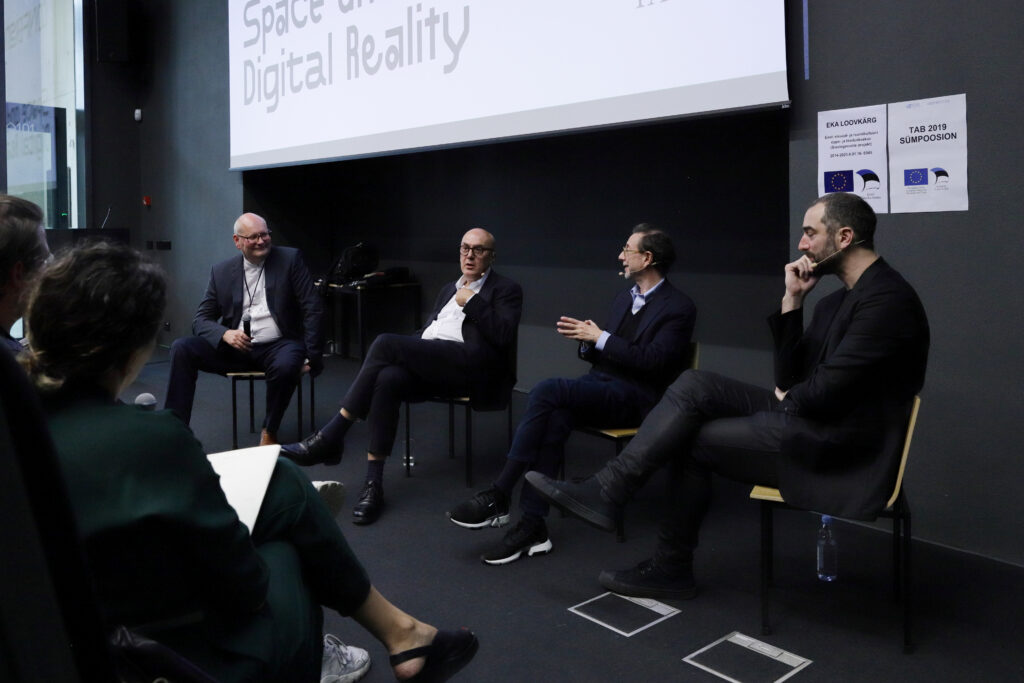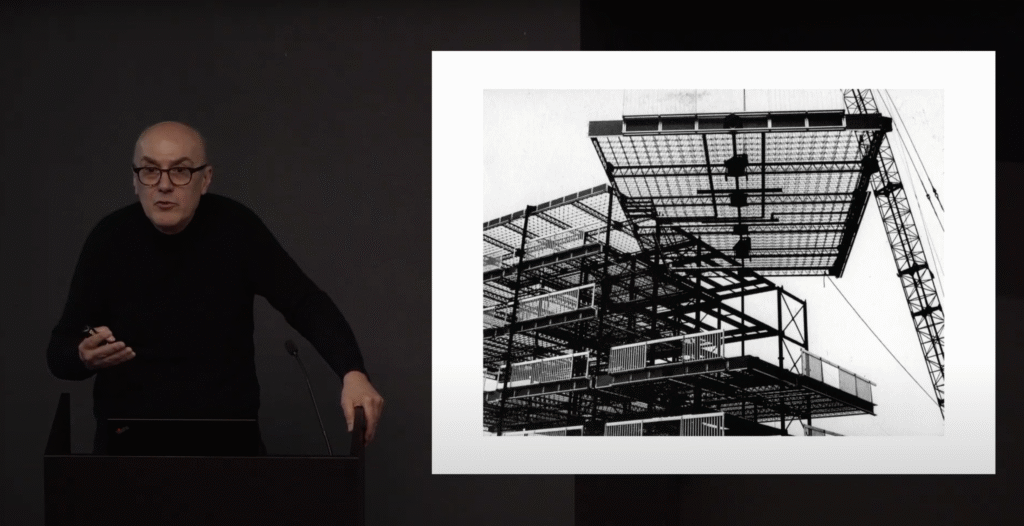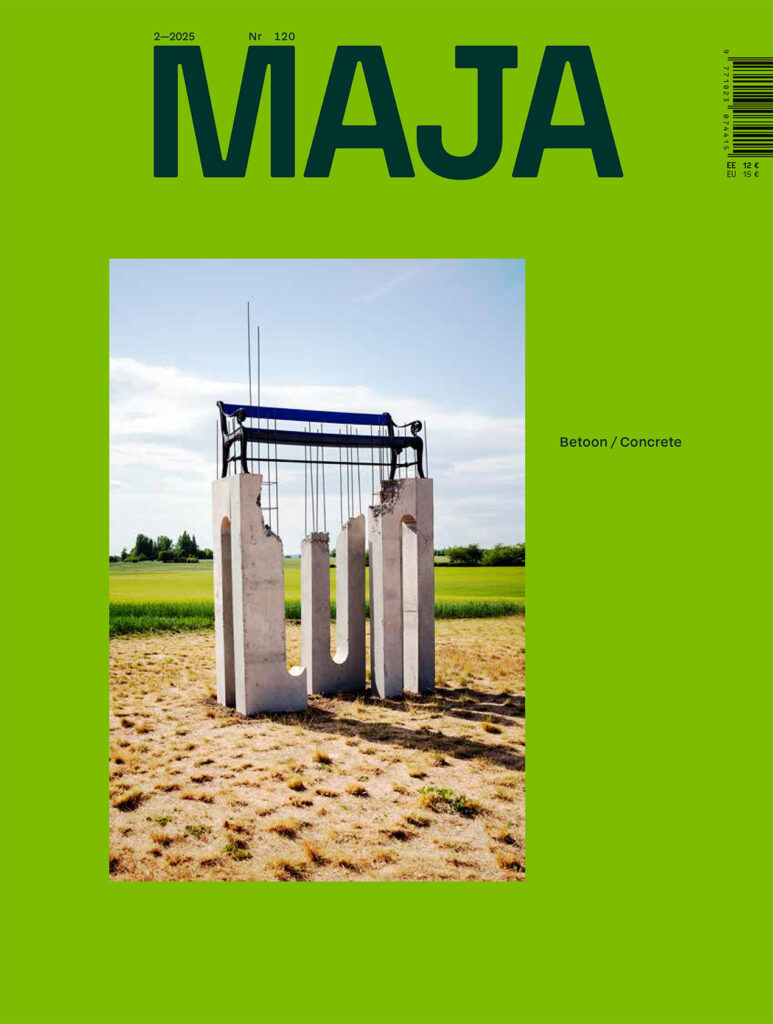Sille Pihlak talks to Antoine Piconiga.
Sille Pihlak (SP): Antoine Picon, you are the G. Ware Travelstead Professor of the History of Architecture and Technology at the Harvard Graduate School of Design and chair of the PhD program in architecture, landscape architecture, and urban planning. In addition to your activities in Boston, you are closely connected to Tallinn and the Estonian Academy of Arts, where you supervise PhD students and advise the Faculty of Architecture. Recently, the university awarded you an honorary doctoral degree—Doctor Honoris Causa—for your achievements and support. Congratulations!
In your writings and teaching at Harvard, you emphasise the term ‘infrastructure’, so I would like to discuss three related topics—rationalisation, resilience, and relatability. Could you start by explaining the original meaning of the term in French and how it has evolved over time?
Antoine Picon (AP): In my seminar ‘Cities, Infrastructure, and Politics’, I define the term through historical layers. The term comes from French, appearing among French engineers in the late 19th century. Originally, it referred to technical systems and objects that support our activities, like railway tracks that enable trains to circulate. Infrastructure was initially related to the rise of networks in the 19th century but not limited to them. Harbour embankments, roads, and other structures also counted as infrastructure because they supported movement.
The term then entered English and other languages in the early 20th century, acquiring a military connotation related to logistics and military functions. After World War II, infrastructure gained a more general meaning, especially in the context of development, as seen in projects like the Aswan Dam, which aimed to modernise Egypt. Infrastructure then became associated with modernisation. Today, we see both a triumph and a crisis of infrastructure. Triumph, because infrastructure now includes everything from power plants to telecommunication networks, like the Internet. Crisis, because the Anthropocene raises questions about the environmental impact of infrastructure investments and the role of new entities in the infrastructure landscape, like Uber, Airbnb, and Amazon.
SP: Speaking of visible infrastructure, in which engineers and architects have distinct roles, you discuss in your book French Architects and Engineers in the Age of Enlightenment the divergence of these professions and the transformation of infrastructure systems planning. Do digital tools have the potential to make architects more rational and engineer-like? Can physical infrastructure become more open to architects now?
AP: Designers have always been involved in infrastructure, like Otto Wagner with the Vienna Metro or Guimard in Paris. The big high-voltage pylon you designed is clearly infrastructure. Today, architects have tools that allow them to integrate engineering constraints more easily, such as material strength and stress. The design profession is also changing. Your generation does not want to be limited to making aesthetically pleasing objects but wants to contribute more broadly to the environment. We see more hybrids of architects and engineers, like Marc Mimram in France and Calatrava. While blurring professional boundaries can be productive, it is essential to maintain distinctions to ensure that architects and engineers complement each other effectively.

Antoine Picon (second from the left) in 2019 at the Estonian Academy of Arts during The Space and Digital Reality Conference. On his right is Jüri Soolep, on his left are Mario Carpo and Roland Snooks.
Photo: Martin Siplane
SP: The term ‘resilience’ in infrastructure is crucial in our efforts to withstand climate change. Considering projects like the Dryline in Manhattan by BIG architects, infrastructure carries the potential to adapt to challenges and endure them. As The Economist put it, ‘Hug pylons, not trees’.
AP: We are entering a world where infrastructure is essential for liveability amidst challenges like sea level rise and global warming. Architects’ role is more ambiguous, pertaining not only to rationalisation but also inserting aesthetic quality into rational designs. Making a pylon beautiful, for instance, helps to make the world more liveable and friendly. Architects remind us that technology should be friendly to all living beings, not just humans. This decentred design approach helps to make the world a more habitable place and contrasts with engineers’ more straightforward functional perspective. What is crucial is the integration of aesthetics with functionality, making sure that infrastructure not only serves its purpose but also enhances the environment it occupies.
While resilience is crucial, making the world meaningful is equally important.
SP: In your recent book The Materiality of Architecture, you discuss how digital advancements have reshaped our relationship with materials. Can infrastructure now be more context-specific and human-related?
AP: Infrastructure is often hidden in the landscape, yet design can make it more visible and respectful of its surroundings, culture, and climate. While resilience is crucial, making the world meaningful is equally important. Meaning here does not concern traditional symbolism that every architect hates, but creating an inhabitable world. Design can make infrastructure more context-specific by reflecting local conditions and cultural heritage. This approach ensures that infrastructure not only meets practical needs but also resonates with the communities it serves.

In 2022, Antoine Picon gave an open lecture titled ‘Artificial Intelligence and the Future of Design’ at the Estonian Academy of Arts.
Photo: Estonian Academy of Arts
SP: Speaking of Estonia, what potential do you see here? Given our geographical location, defence needs, electricity production rerouting, and robust online networks like Bolt and Skype, what hidden design potential do you see for a country building significant visible and invisible infrastructure?
AP: What strikes me about Estonia is its small size and outsized influence. Even within the Baltic region, Estonia has a unique language and a strong global digital presence. It reminds me of Switzerland, which has exceptional and unusual standards. Like Swiss design and cities, which are very particular, Estonia has managed to articulate a proposal that can be exported to many countries, from architecture to various goods. In Switzerland, infrastructure has always been prominent due to its extreme topography. The paradox of Estonia is that you have managed to maintain a small identity on the international stage while being very ambitious. Now, here is my question to you: to what extent do you consider your pylon contextual? Its form is evidently connected to mechanical constraints, but it also bears the mark of a certain type of use of design software. Where do you see the role of context in this?
SP: A reversed interview, lovely! The pylon design is driven by local material logic, using as little material and joints as possible. The name alludes to a local pop song, and the landscape evokes a fox sitting by the nature-protected bog, serving as a pivot point in cross-country commuting and local identity.
AP: Excellent. Analysing your design factors—pop culture, landscape, environment, and local pride—provides food for thought. You are clearly trying to define a new discourse here.
Antoine Picon will hold a lecture in the Estonian Academy of Arts on 6 November 2024.
SILLE PIHLAK has faith in good space. She is a practicing architect, researcher and the dean of the Estonian Academy of Arts Faculty of Architecture.
HEADER photo by Estonian Academy of Arts
PUBLISHED: MAJA 3-2024 (117) with main topic INFRASTRUCTURE




